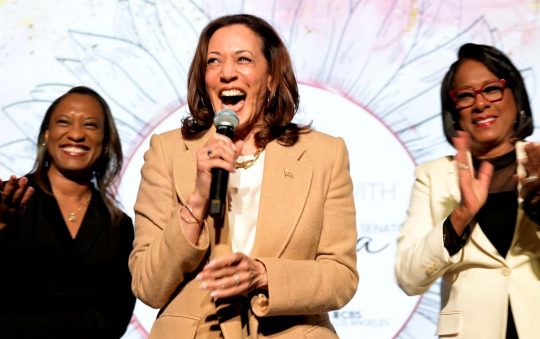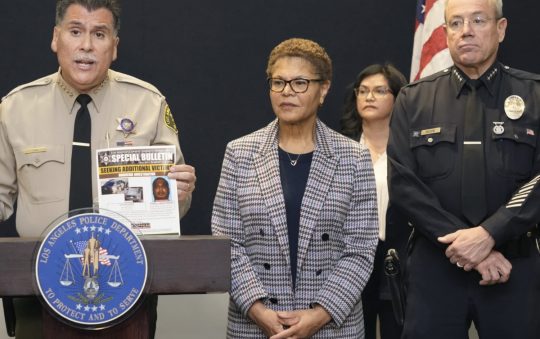
Long before the 2015 Sandra Bland traffic stop in Houston, Texas, African Americans have been battling with the reoccurring fear of driving while Black. Some people believe that the fear of driving while Black, is associated with a combination of citizen-police relations and the historical beatings of Black men and women. The issue of being stopped by a police officer is a systemic problem that has affected people of color nationally with new solutions and yet the same outcomes.
Recently, the Los Angeles Times conducted an investigation regarding the Los Angeles Police Department’s Metropolitan Division and the increasing number of stops officers have made on African American motorists.
According to the report, “Nearly half the drivers stopped by Metro are Black, which has helped drive up the share of African Americans stopped by the LAPD overall from 21 percent to 28 percent since the Metro expansion, in a city that is 9 percent Black, according to the analysis.”
In the South Los Angeles area alone, Metro officers are pulling over Black drivers more so than any other ethnicity even though African Americans make up only one-third of the city’s population.
Although the findings avoid any finger pointing in regards to racial profiling and does not include the reasons why each person was pulled over and how the traffic stop was handled, it does prove that driving while Black was and still is a serious issue that needs to be addressed.
“Black people [being] pulled over at a rate that is five times our population share is enraging, but not surprising to us. The recent findings simply confirm what our community has been saying for decades…that driving while Black is real,” co-founder of the Los Angeles chapter of Black Lives Matter, Melina Abdullah.
On Monday, January 28, Los Angeles Mayor Eric Garcetti joined by LAPD Chief of Police Michel Moore responded to the excessively high rates of Metro officers pulling over African Americans.
“Numbers in that story showed that African Americans were pulled over at a disproportionate rate and that [has] always [been] something that troubles me and is deeply concerning,” said Garcetti.
“I have asked folks to dig deeper into those numbers. Trust is essential to our public safety and every Angeleno deserves to be offered dignity and respect. When we put in a new strategy down in place to drive down crime, we worked with LAPD to institute mandatory training for officers in implicit bias and de-escalation, one of the bravest jumps of any big police department in this country and [we are] very proud of all the men and women who participated in that.”
Moore responded to the L.A. Times report during the press conference with the following statement:
“The department does not tolerate discrimination of any kind. As chief, I am committed to ensuring our strategies and actions reflect our core values each day. The L.A. Times report renews an important question on just how the department, as a department, we ensure our enforcement strategies, understand the potential impact on public trust as well as the safety of our communities particularly those most impacted by violence.”
Moore goes on to explain the strategies that are being implemented by the department.
“We know the incident of violent crime does not strictly follow, proportionately, the ethnic makeup of a community, neither should our enforcement strategies. Our strategies today reflect the critically needed balance of enforcement tightly coupled with the proper training of our people, effective systems of accountability and transparency.”
During the press conference, Garcetti announced that the office of the inspector general will be releasing an audit on the stops made by the gang enforcement division within the next few weeks.
“That will be followed by a second audit this year, an in-depth study focusing on stops conducted by LAPD’s Metro Division as well,” he said.
“We still have a lot of work to do, we never rest, we are never happy with these numbers, we want to see them continue to go down and trust to go up, but this is a good year to celebrate so much.”
Although Garcetti is proud of the improvement the department has made over the years, local residents like Abdullah, are not satisfied.
“The mayor’s ‘thumbs up’ to the already in-progress study is not a viable solution. Perhaps even more problematic are the statements made by Chief Moore today in Police Commission meeting, where he called for additional ‘trust’ by [Black] community members of police,” she said.
“Moore wants to expand what Connie Rice called “stop-and-frisk in a car” to stop-and-frisk on the sidewalk, stop-and-frisk on the playground, and stop-and-frisk throughout our communities …by putting more police in Black communities. But more police in our neighborhoods brings greater criminalization of our people, increased brutality and fatal interactions. In a city that already spends 53 percent of its general fund on police, what our community needs is fewer police and more programs….more mental health resources, after-school programs, livable wage jobs and affordable housing.”







